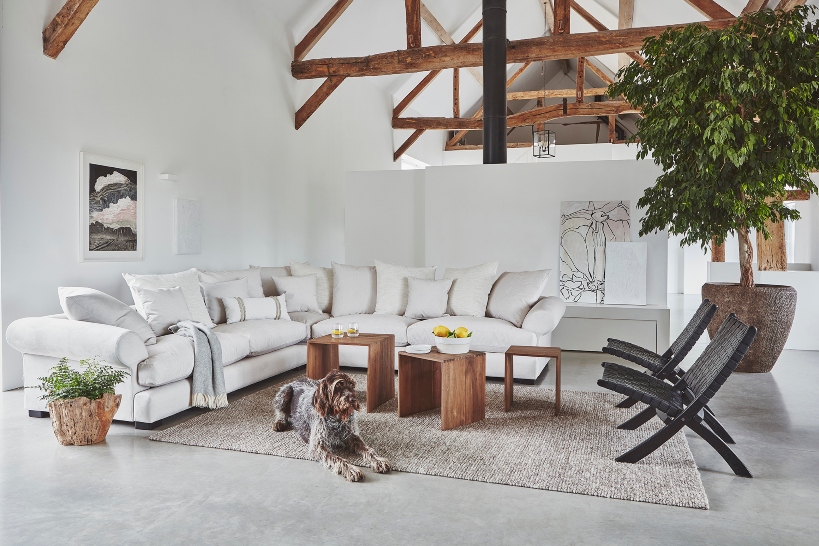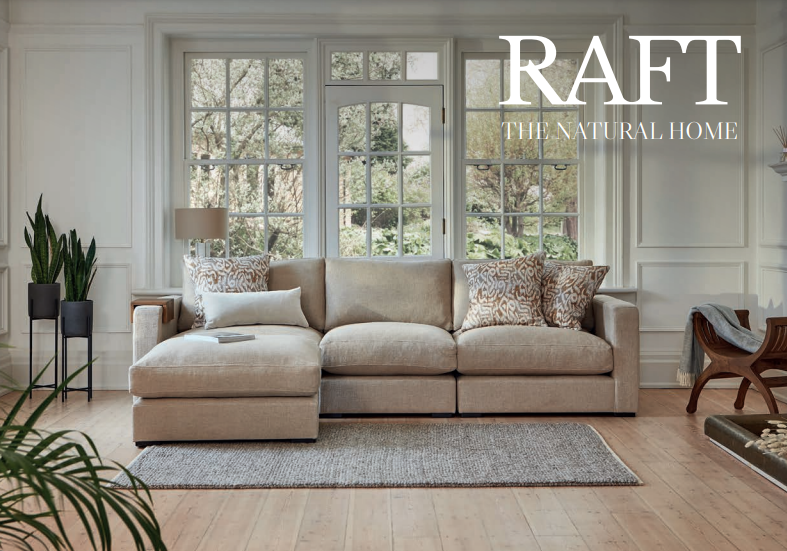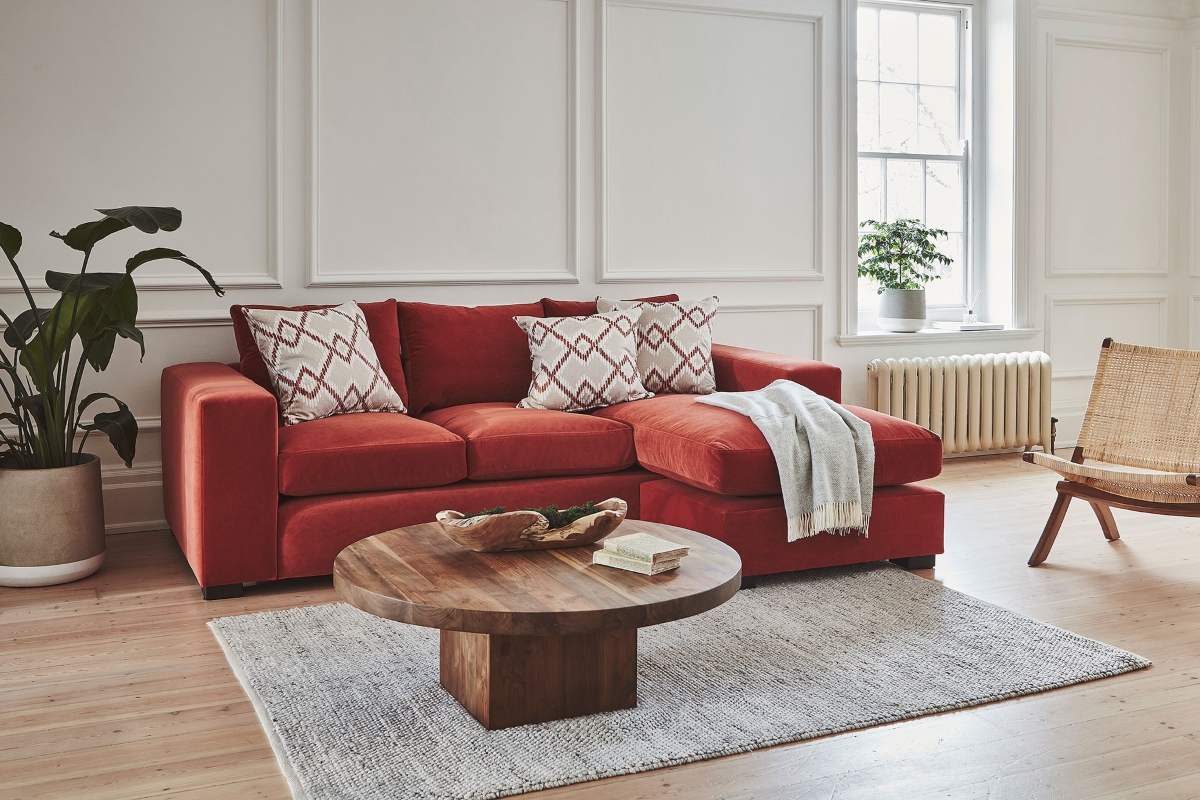To know how to create industrial interiors you must have an understanding of the two fundamental pillars that underpin the aesthetic. The first is minimalism and the second is durability. Industrial interiors entered the mainstream over forty years ago, marking a transition from the refined to the (seemingly) unrefined. However, as with all interior design projects, effectively executing industrial style interiors takes meticulous attention to detail.
The bare necessities
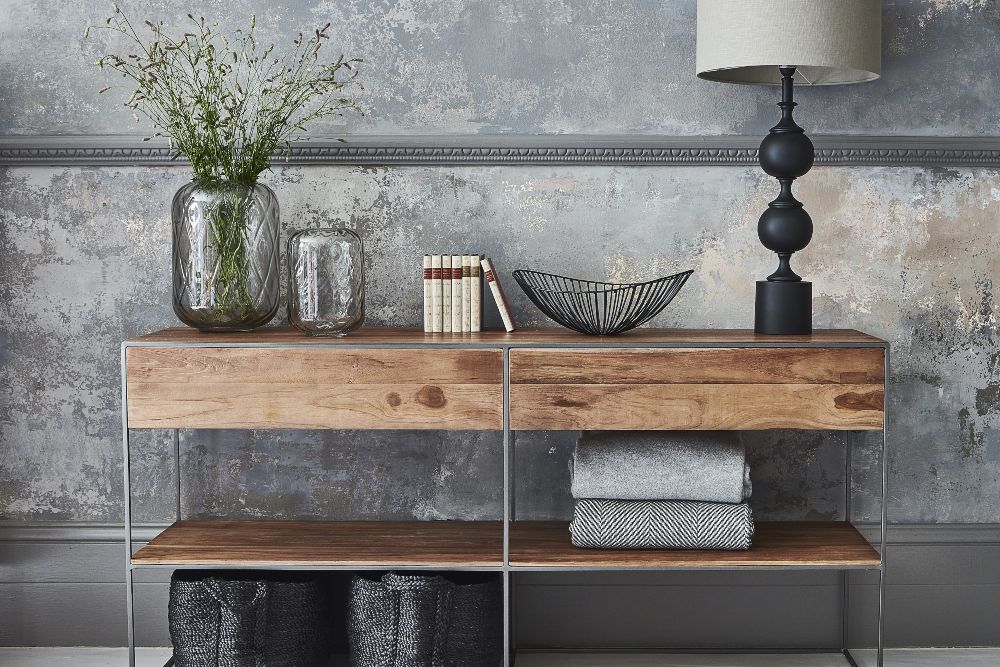
The roots of industrial interiors are not in the on-demand New York loft apartments but in the warehouses from which they have been converted and modelled. For this reason, practical furnishing is key. Avoid clutter and keep your space clean and simple with hidden storage pieces and furniture boasting contemporary designs, void of faff. More is less when it comes to this look... a few oversized pieces will give your room a spacious and industrial feel. Also, don't forget the power of mirrors in amplifying a space and reflecting light (the interior designer's secret weapon).
Raw materials
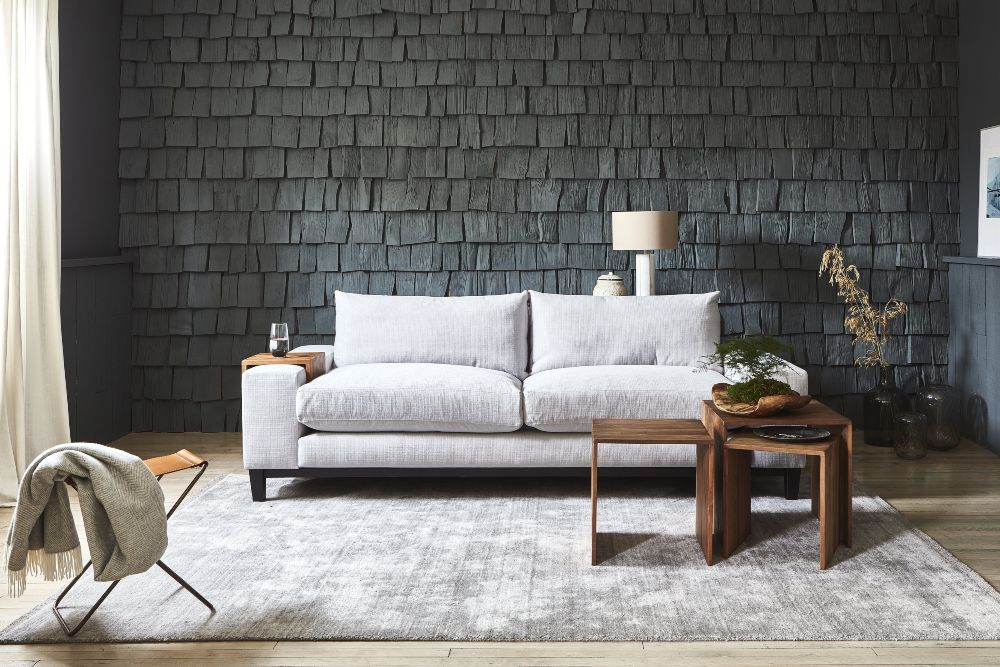
Industrial interiors can be characterised by their unfinished aesthetic, with crittall windows, exposed bricks, piping and ceiling beams dominating Pinterest feeds lusting after the look. However, if your space isn't naturally endowed with such raw foundations, you can create this feel with thoughtful styling. If you're about to embark on a new project and are lusting after the raw style of exposed brick, an alternative option is creating a feature wall with decorative tiles; this is an excellent way to add a rustic depth and texture to a space. Beyond this, when furnishing and accessorising, opt for utilitarian materials such as reclaimed wood, metal and concrete. These materials will help you towards achieving that unfinished warehouse look.
A clean and contemporary sofa
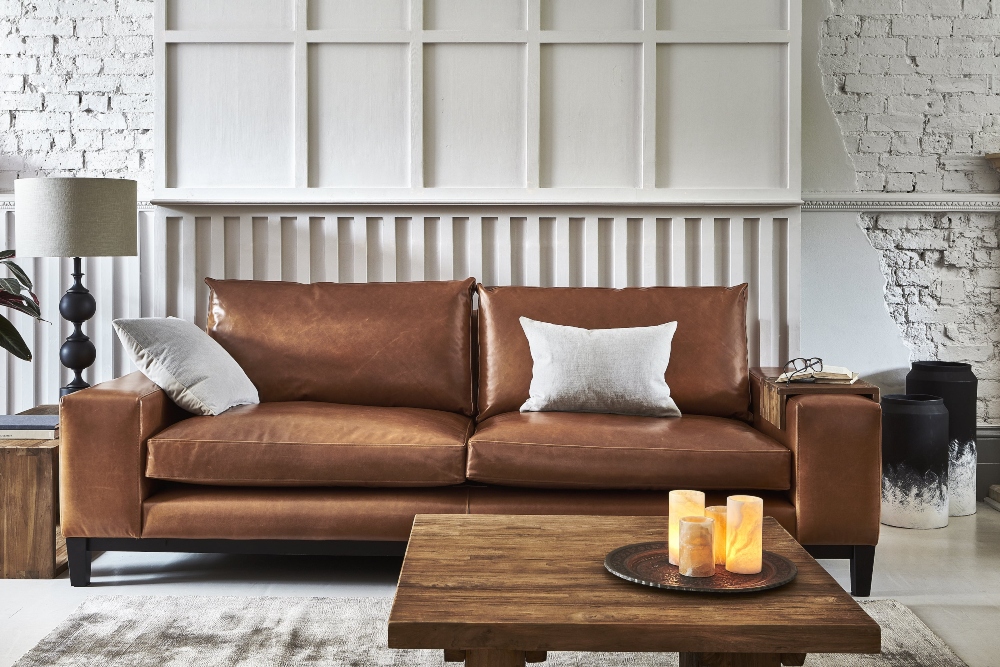
Furnishing an industrial space requires attention to detail and when choosing your sofa it's important to opt for a design with a simple, contemporary shape defined by clean lines. Our New York Sofa is incredibly popular among city-dwellers and those with a vision of creating a space that reflects a lifestyle of stylish purpose. Despite exuding contemporary minimalism, this model doesn't compromise on comfort or functionality. Drawing inspiration from the Big Apple, the New York is designed with the space-conscious consumer in mind; the modular compartment set-up breaks down for compact installation. What's more, f
rom the supportive timber frame to down-filled cushions, the New York has a deep-set surface area, perfect for lounging.
Neutral colour scheme
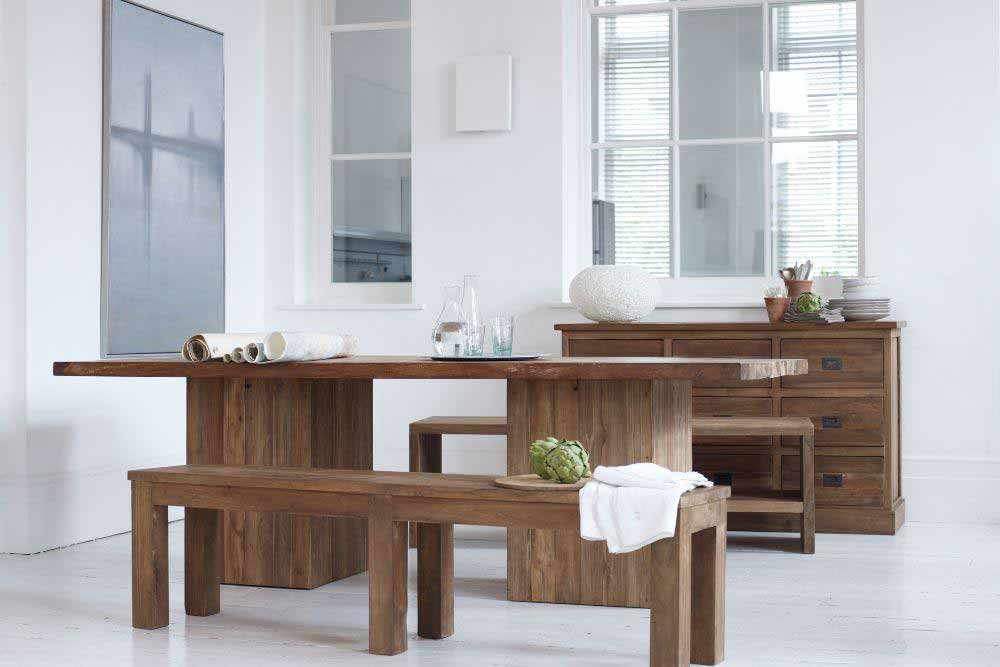
To achieve an industrial feel, a neutral colour palette is an important step to take. Most typical in classic industrial style lofts and homes are greys, neutrals, black and natural wood. Pull together a mood board and play around with different textures in order to give a space more character. As mentioned above, sticking to utilitarian materials is a safe bet in terms of giving a room an unfinished warehouse look, but also in order to soften a space, showing versatility as opposed to uniformity is important. Finally, let your personality shine through and don't hesitate to include indoor greenery, scatter cushions and your favourite statement pieces. Remember, an interior trend can't replace your natural taste and things that make you happy. A pop of colour here and there is fine as long as it doesn't detract from the overall look.
Oversized accessories
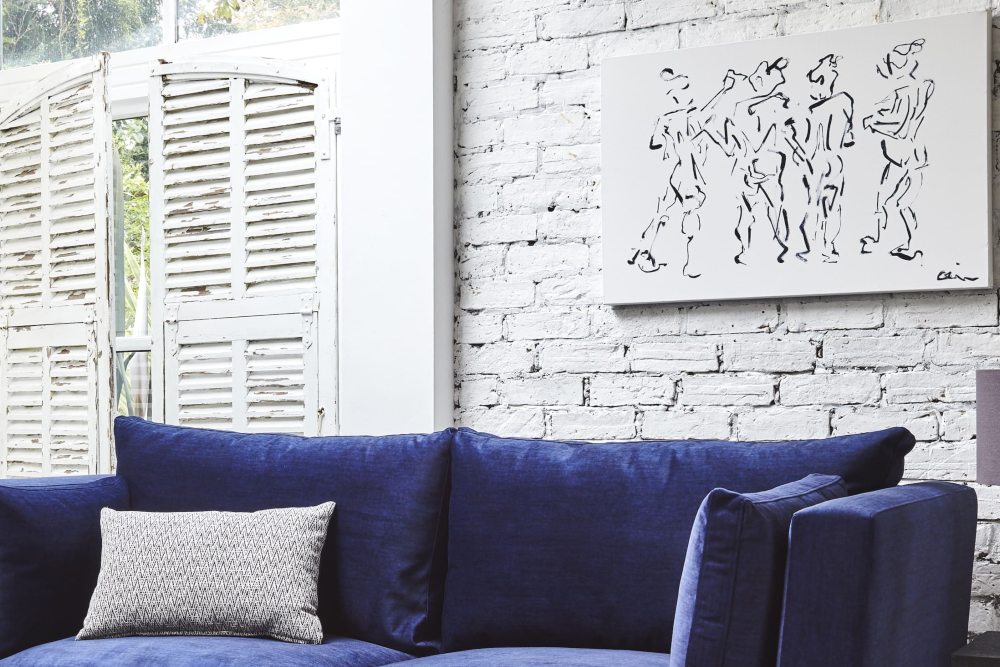
From oversized concrete planters with huge, leafy plants (such as our favourite, the Fiddle-Leaf Fig) to vintage metal clocks, floor lamps and statement wall hangings and art, industrial interiors thrive with statement accessories made from utilitarian materials. Lighting is always an important factor to take into consideration, no matter the style of your interiors. However, lighting is especially crucial if you're following an industrial theme. Industrial interiors can be defined by their ample space and openness. Therefore, to create the illusion of multiple living areas, a variety of lighting stations will be an effective trick. Pendant lighting with exposed bulbs, simple table lamps and a statement floor lamp will create depth and dimension.

 The roots of industrial interiors are not in the on-demand New York loft apartments but in the warehouses from which they have been converted and modelled. For this reason, practical furnishing is key. Avoid clutter and keep your space clean and simple with hidden storage pieces and furniture boasting contemporary designs, void of faff. More is less when it comes to this look... a few oversized pieces will give your room a spacious and industrial feel. Also, don't forget the power of mirrors in amplifying a space and reflecting light (the interior designer's secret weapon).
The roots of industrial interiors are not in the on-demand New York loft apartments but in the warehouses from which they have been converted and modelled. For this reason, practical furnishing is key. Avoid clutter and keep your space clean and simple with hidden storage pieces and furniture boasting contemporary designs, void of faff. More is less when it comes to this look... a few oversized pieces will give your room a spacious and industrial feel. Also, don't forget the power of mirrors in amplifying a space and reflecting light (the interior designer's secret weapon).
 Industrial interiors can be characterised by their unfinished aesthetic, with crittall windows, exposed bricks, piping and ceiling beams dominating Pinterest feeds lusting after the look. However, if your space isn't naturally endowed with such raw foundations, you can create this feel with thoughtful styling. If you're about to embark on a new project and are lusting after the raw style of exposed brick, an alternative option is creating a feature wall with decorative tiles; this is an excellent way to add a rustic depth and texture to a space. Beyond this, when furnishing and accessorising, opt for utilitarian materials such as reclaimed wood, metal and concrete. These materials will help you towards achieving that unfinished warehouse look.
Industrial interiors can be characterised by their unfinished aesthetic, with crittall windows, exposed bricks, piping and ceiling beams dominating Pinterest feeds lusting after the look. However, if your space isn't naturally endowed with such raw foundations, you can create this feel with thoughtful styling. If you're about to embark on a new project and are lusting after the raw style of exposed brick, an alternative option is creating a feature wall with decorative tiles; this is an excellent way to add a rustic depth and texture to a space. Beyond this, when furnishing and accessorising, opt for utilitarian materials such as reclaimed wood, metal and concrete. These materials will help you towards achieving that unfinished warehouse look.

 To achieve an industrial feel, a neutral colour palette is an important step to take. Most typical in classic industrial style lofts and homes are greys, neutrals, black and natural wood. Pull together a mood board and play around with different textures in order to give a space more character. As mentioned above, sticking to utilitarian materials is a safe bet in terms of giving a room an unfinished warehouse look, but also in order to soften a space, showing versatility as opposed to uniformity is important. Finally, let your personality shine through and don't hesitate to include indoor greenery, scatter cushions and your favourite statement pieces. Remember, an interior trend can't replace your natural taste and things that make you happy. A pop of colour here and there is fine as long as it doesn't detract from the overall look.
To achieve an industrial feel, a neutral colour palette is an important step to take. Most typical in classic industrial style lofts and homes are greys, neutrals, black and natural wood. Pull together a mood board and play around with different textures in order to give a space more character. As mentioned above, sticking to utilitarian materials is a safe bet in terms of giving a room an unfinished warehouse look, but also in order to soften a space, showing versatility as opposed to uniformity is important. Finally, let your personality shine through and don't hesitate to include indoor greenery, scatter cushions and your favourite statement pieces. Remember, an interior trend can't replace your natural taste and things that make you happy. A pop of colour here and there is fine as long as it doesn't detract from the overall look.
 From oversized concrete planters with huge, leafy plants (such as our favourite, the Fiddle-Leaf Fig) to vintage metal clocks, floor lamps and statement wall hangings and art, industrial interiors thrive with statement accessories made from utilitarian materials. Lighting is always an important factor to take into consideration, no matter the style of your interiors. However, lighting is especially crucial if you're following an industrial theme. Industrial interiors can be defined by their ample space and openness. Therefore, to create the illusion of multiple living areas, a variety of lighting stations will be an effective trick. Pendant lighting with exposed bulbs, simple table lamps and a statement floor lamp will create depth and dimension.
From oversized concrete planters with huge, leafy plants (such as our favourite, the Fiddle-Leaf Fig) to vintage metal clocks, floor lamps and statement wall hangings and art, industrial interiors thrive with statement accessories made from utilitarian materials. Lighting is always an important factor to take into consideration, no matter the style of your interiors. However, lighting is especially crucial if you're following an industrial theme. Industrial interiors can be defined by their ample space and openness. Therefore, to create the illusion of multiple living areas, a variety of lighting stations will be an effective trick. Pendant lighting with exposed bulbs, simple table lamps and a statement floor lamp will create depth and dimension. 